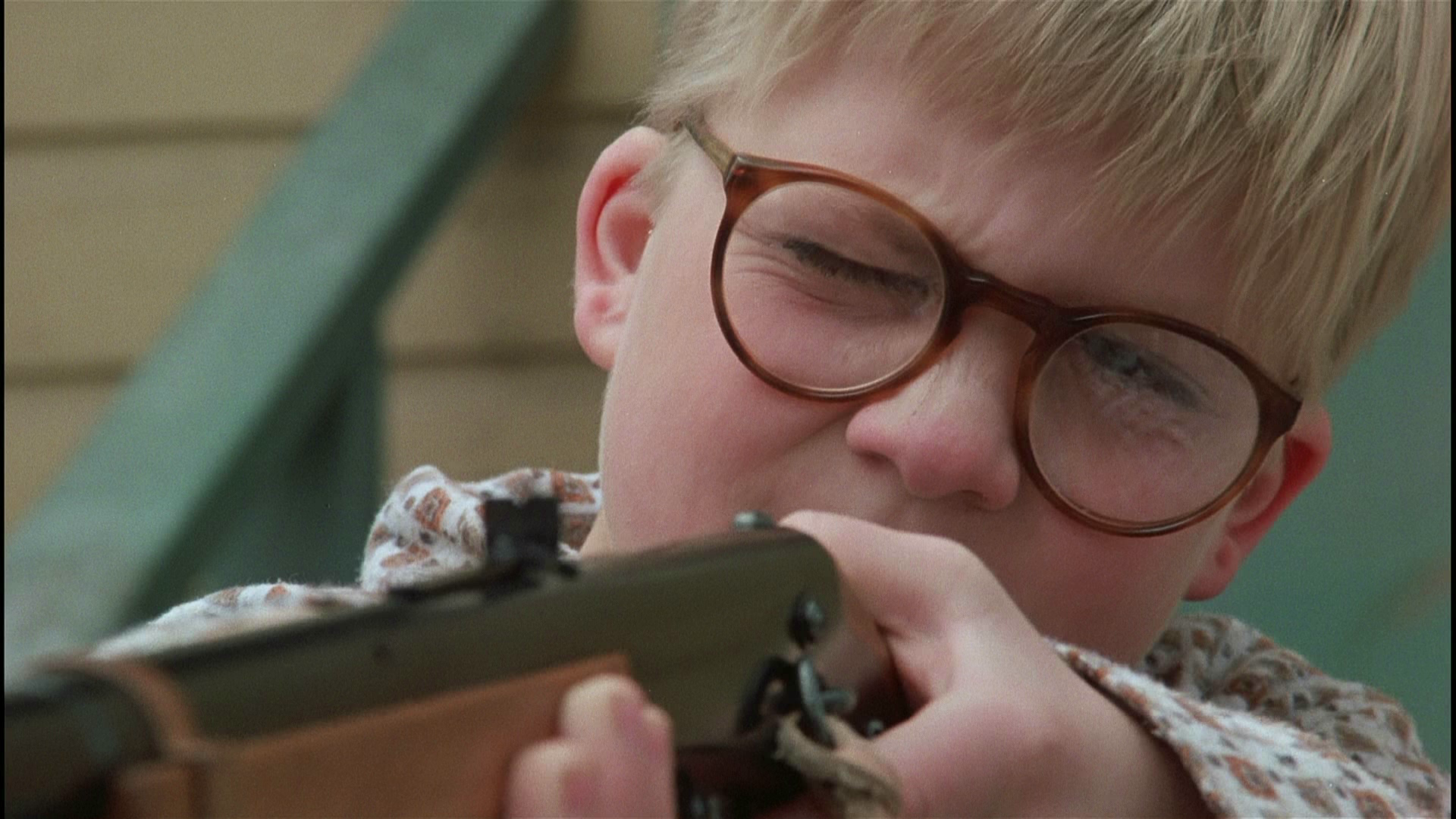How do the “two Ralphies” of “A Christmas Story” create a perfect balance?
A Christmas Story (1983) is a classic holiday tale born from unexpected origins. Peter Billingsley, an unknown child actor who plays the lead role of Ralphie, turned out to be the perfect representation of an American boy in the 1940s. And Canadian director Bob Clark, at the time known as anything but a director of family films after the commerical success of his R-rated sex comedies Porky’s (1982) and Porky’s II: The Next Day (1983), created an iconic holiday film rooted in American tradition. It turns out that Clark, along with co-screenwriters Jean Shepherd and Leigh Brown, wrote a story perfect in its approach to Christmas that features a relatable, lovable American family.
The film takes place amorphously in the 1940s and captures the era so authentically that it makes viewers nostalgic for a time many didn’t see. The family could be anyone’s family—an idealistic child, an immature younger kid, a stubborn old-time father with old-time family values, and the definitive maternal keystone that keeps the rest of the gang in order. It’s a Christmas movie from a child’s perspective, about a child desperately doing what he can to get what he wants, and his parents who desire little more than a peaceful holiday. In that, it’s an honest Christmas movie seen through the wide-eyed enthusiasm of one of the holiday’s biggest beneficiaries: a kid.
The Dissolve says, “It is simply a movie about people who get what they want for Christmas. When you’re 9 years old in 1940s Indiana, what you get is a BB gun. When you’re an adult, then or now, hopefully you get twinkly lights, luminous powder falling from the sky, and someone right there, to share all of it with you. Those are the two extremes in the Christmas Story version of the happy American home, in the era of Norman Rockwell.”

The heart of that family is Ralphie, whose on-screen antics are measured by the narration of his adult self (voiced by co-screenwriter Jean Shepherd, whose personal memoirs served as inspiration for the film). We care about Ralphie as soon as he’s introduced, which is crucial for the film to be successful. Voice-over can be a stand-in for lazy writing, but in the case of A Christmas Story, it’s what gives the movie its distinctive flavor. As The Black List’s Go Into the Story blog writes, the film “didn’t just use the voice-over mechanism to do that whole tell-us-exactly-what-is-happening-on-the-screen routine – as if we are all thick in the head. Instead, the genius decision was made to make the narrator Ralphie as an adult, reminiscing about the most important Christmas gift of his life. What makes this screenwriting tactic succeed here is that the older, more invisible Ralphie goes off on cool and interesting tangents instead of sticking to the script.”
While child Ralphie talks and behaves like a crazed kid at the holidays, adult Ralphie talks with more sophisticated, adult language. The bulk of the film’s quotable dialogue comes from adult Ralphie as he poetically describes his memories. Things like “In the heat of battle my father wove a tapestry of obscenities that as far as we know is still hanging in space over Lake Michigan,” and, “Only one thing in the world could’ve dragged me away from the soft glow of electric sex gleaming in the window.” This stuff is gold. Having written the material he’s saying based on his own childhood, Jean Shepherd, in his commanding and humorous Adam West-soundalike voice, conveys the dialogue perfectly and builds a real sense of authenticity within Ralphie and his family.
Adult Ralphie’s contributions supply the humor and tone for the film, and allow child Ralphie’s on-screen character behavior to facilitate plot progression. Ralphie’s adult self knows how the story ends, complete with its “be careful what you wish for” message, but child Ralphie doesn’t. His relentless determination to wake up on Christmas morning as the proud owner of a new Official Red Ryder Carbine-Action Two-Hundred-Shot Range Model Air Rifle never falters. Acquiring that gun is his goal, and that drive pushes the story forward to its inevitable conclusion.
In tandem, the two Ralphie elements seamlessly blend to cover everything the story needs to be a cohesive narrative. The combination of the two Ralphies makes the film complete, and without those ingredients layered the way they are, the film wouldn’t have been as endearing.

